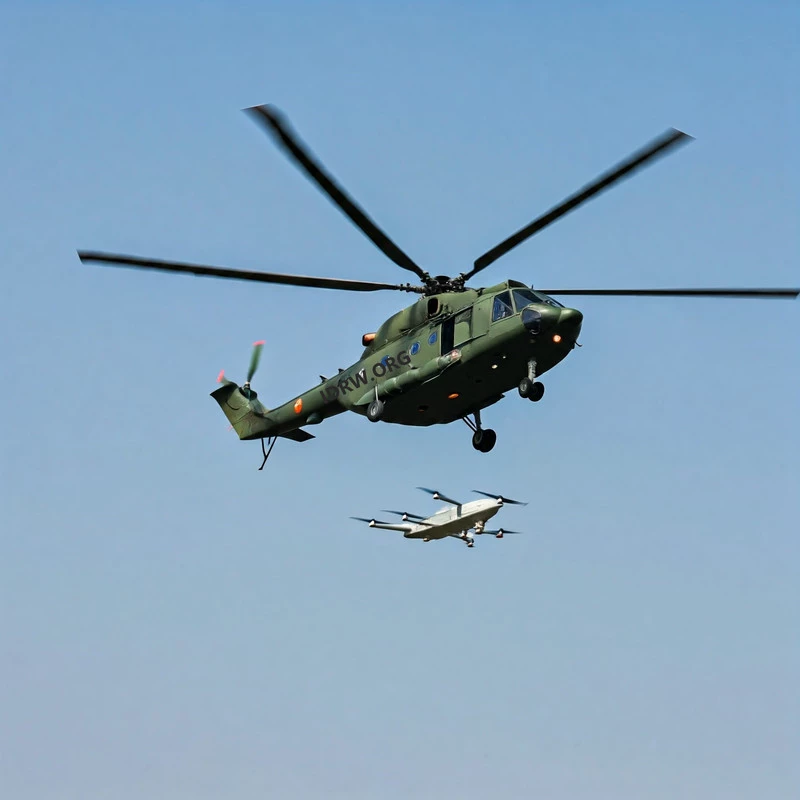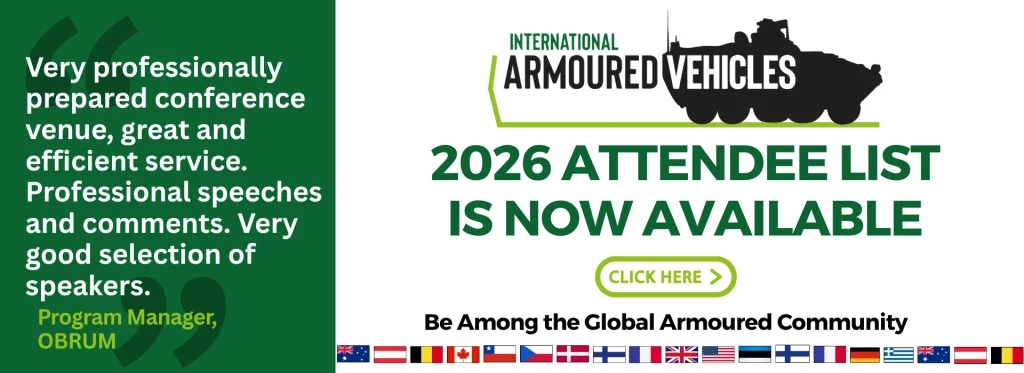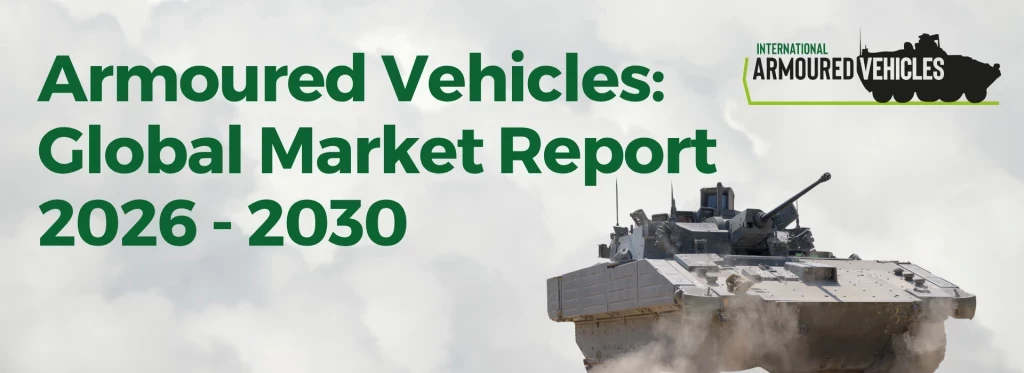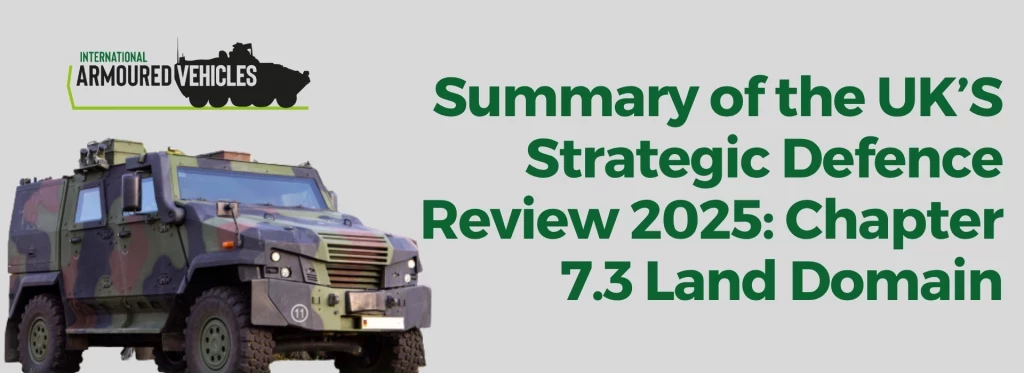Fighting Vehicles – What Military Buyers are Looking for in the Next Generation
Add bookmark
The nature of modern warfare is changing. With the impact of new hybrid threats, urban operations, and renewed competition between major powers, military procurement teams are rethinking what they need from the next generation of fighting vehicles.
Priorities encompass much more than firepower. Capability planners recognise the importance of survivability, digital integration, modularity, and long-term value as central to acquisition strategies. In this article, we will take a look at the key capabilities defence stakeholders are looking for in future fighting vehicle platforms.
Lessons from Ukraine and Gaza
Recent conflicts in Ukraine and Gaza have exposed vulnerabilities within traditional armour and consequently driven fast adoption of both active and passive protection systems in modern fighting vehicles.
In Ukraine, loitering munitions, first-person view (FPV) drones, and advanced anti-tank guided missiles (ATGMs) have been used with devastating effect. Open-source intelligence indicates that Russian forces have suffered particularly heavy losses among older platforms such as the T-72 and T-90 tanks. These precision threats highlight the growing need for active countermeasures and enhanced situational awareness in armoured fighting vehicles.
Meanwhile, in Gaza, the Israel Defense Forces (IDF) have demonstrated the battlefield effectiveness of active protection systems. The Trophy APS, deployed on Merkava tanks and Namer APCs, has successfully intercepted numerous anti-tank threats and has become a core element of the IDF’s survivability strategy.
These operational theatres are prompting a shift toward multi-layered survivability models that combine modular passive armour (armour that can be added or removed depending on the mission) with integrated threat detection and defeat mechanisms. Programmes such as the UK’s Challenger 3, for example, incorporate both modular armour and APS, reflecting this new approach to fighting vehicle protection.
C4ISR and AI-driven situational awareness for fighting vehicles
Modern fighting vehicles are no longer stand-alone platforms. They have evolved significantly in recent years into digitally enabled nodes within a connected, multi-domain battlespace. Militaries now demand seamless real-time data exchange between vehicles, UAVs, ISR platforms, and command-and-control centres as part of a shift toward integrated C4ISR systems.
France’s SCORPION programme exemplifies this evolution, with the Système d’Information du Combat SCORPION (SICS) enabling collaborative combat operations through real-time data sharing between vehicles, dismounted troops, and command elements. The system is designed to support a fully networked force structure, enhancing tactical responsiveness and operational coordination.
Similarly, the joint German-French Main Ground Combat System (MGCS), expected to begin replacing the Leopard 2 and Leclerc tanks by 2040, is being designed with a digital-first architecture, featuring advanced sensors, AI, and cross-domain interoperability within NATO frameworks.
In the United States, the Army’s Optionally Manned Fighting Vehicle (OMFV) programme leverages digital engineering to accelerate development. The platform will integrate AI-driven systems for threat detection, route planning, and predictive maintenance, enabling faster battlefield decision-making and reduced cognitive burden on crews.
These programmes reflect the future of fighting vehicles as fully integrated, intelligent systems capable of sharing and acting on real-time information within an unpredictable and highly competitive battlespace.
Urban warfare and terrain versatility in fighting vehicles
In complex combat environments, such as dense urban settings, traditional heavy armour alone is no longer sufficient. Modern armed forces require fighting vehicles that can manoeuvre through tight cityscapes and adapt swiftly to a range of mission profiles, including electronic warfare, drone coordination, logistics, and direct fire support.
The Rheinmetall Lynx KF41 demonstrates this flexibility through its modular architecture, which enables rapid reconfiguration into roles such as infantry fighting, command and control, reconnaissance, ambulance, recovery, or mortar carrier. A recent variant, developed in partnership with Patria, integrates the NEMO 120mm mortar system, extending its versatility in urban indirect fire support roles.
Similarly, the British Army’s Boxer vehicle, described as the ‘Swiss Army knife of armoured vehicles’, employs a modular design that separates the drive and mission modules. This allows operators to switch mission roles in as little as 20 minutes without specialist tools, enhancing responsiveness in fast-moving urban operations.
Meanwhile, hybrid-electric drivetrains are gaining traction across Western militaries, with the U.S. Army exploring these technologies for future tactical fighting vehicles. Benefits include quieter operation, reduced thermal signatures, and greater fuel efficiency – these are advantages that are especially useful in contested, supply-limited urban theatres.
Cost, sustainability, and long-term readiness of fighting vehicles
Military procurement teams are increasingly focusing on the full lifecycle of fighting vehicles. This means considerations such as fuel efficiency, ease of maintenance, availability of spare parts, and through-life support have become central components of platform evaluation. As part of this shift, sustainable defence procurement is gaining prominence. This incorporates the adoption of recyclable materials, hybrid-electric powertrains, and energy-efficient systems aimed at reducing fuel dependency and minimising thermal signatures.
The UK Ministry of Defence (MOD) has taken noteworthy steps in this direction. Its Defence Equipment & Support (DE&S) Environmental Strategy emphasises integrating environmental performance objectives into procurement and support arrangements. This includes setting clear sustainability targets, encouraging innovation in sustainable technologies, and collaborating with suppliers to enhance environmental performance across the supply chain.
Furthermore, the MOD's Climate Change and Sustainability Strategic Approach presents a roadmap to achieving net-zero by 2050 ambitions. It advocates for the integration of circular economy principles into defence procurement, promoting the reuse and recycling of materials, and leveraging low-carbon technological opportunities from broader industry sectors.
NATO has also recognised the importance of sustainability in defence procurement. The alliance's Climate Change and Security Action Plan encourages member nations to incorporate environmental criteria into their procurement processes. This includes prioritising energy efficiency in the development of new fighting vehicles and exploring the use of alternative fuels.
Building the right fighting vehicle for a new era
Lessons from Ukraine, Gaza, and other recent conflicts have made it clear that the next generation of fighting vehicles need to be agile, smart, survivable, and sustainable.
Traditional procurement timelines are no longer viable in a world where battlefield dynamics have the ability to shift overnight. The Ukraine conflict has shown how vital it is to fast-track acquisition, whether through upgrades to existing platforms or rapid partnership-based production. Germany, in particular, has implemented initiatives to simplify and expedite defence procurement, aiming to better leverage its domestic industrial base and respond more effectively to emerging security challenges.
From active protection systems and AI-driven networks to modular chassis and low-emission propulsion, future fighting vehicles must deliver across multiple domains - not just firepower, but flexibility, interoperability, and longevity.
Want to stay ahead of evolving procurement trends?

Join Defence IQ’s upcoming International Armoured Vehicles Conference - the world’s premier meeting ground for the armoured vehicles community. Connect with 1,400+ global military leaders, government officials, and senior industry decision-makers as they shape the future of next-generation fighting vehicles. Discover the latest innovations in survivability, digital integration, modularity, and sustainable design at this must-attend event.
Learn MoreReferences
Survivability
1. Oryx. Attack On Europe: Documenting Russian Equipment Losses During The Russian Invasion Of Ukraine. Available at: https://www.oryxspioenkop.com/2022/02/attack-on-europe-documenting-equipment.html (Accessed 7 May 2025).
2. Army Recognition. “Israel's Rafael Upgrades Its Trophy Active Protection System to Counter Kamikaze Drones.” Army Recognition, February 2025. Available at: https://armyrecognition.com/news/army-news/2025/israels-rafael-upgrades-its-trophy-active-protection-system-to-counter-kamikaze-drones (Accessed 12 May 2025).
3. Rafael Advanced Defense Systems. Trophy APS: Operational Active Protection System. Available at: https://www.rafael.co.il/system/trophy-aps/ (Accessed 6 May 2025).
UK Ministry of Defence. “£20 Million Contract Marks Big Steps Towards Challenger 3 Missile Protection System.” British Army News. Available at: https://www.army.mod.uk/news/20-million-contract-marks-big-steps-towards-challenger-3-missile-protection-system/ (Accessed 9 May 2025).
Digital Backbone
1. Defense Here. “French Army’s SCORPION Program Marks Key Milestones at Canjuers Event.” Available at: https://defensehere.com/en/french-armys-scorpion-program-marks-key-milestones-at-canjuers-event/ (Accessed 4 May 2025).
2. Army Technology. “MGCS Project: France and Germany Sign New Agreement.” Army Technology. Available at: https://www.army-technology.com/news/mgcs-project-new-agreement/ (Accessed 8 May 2025).
3. C4ISRNET. “Digital Engineering Makes Bradley Replacement Better, Army Leaders Say.” C4ISRNET, 11 October 2022. Available at: https://www.c4isrnet.com/industry/2022/10/11/digital-engineering-makes-bradley-replacement-better-army-leaders-say/ (Accessed 5 May 2025).
Urban Warfare and Terrain Versatility
1. Army Recognition. “Rheinmetall Partners with Patria to Develop a New Lynx KF41 NEMO Mortar Variant for Hungary.” Army Recognition, March 2025. Available at: https://armyrecognition.com/news/army-news/2025/rheinmetall-partners-with-patria-to-develop-a-new-lynx-kf41-nemo-mortar-variant-for-hungary (Accessed 10 May 2025).
2. Forces News. “Boxer: British Army’s Next-Generation Armoured Fighting Vehicle Explained.” Forces News, October 2023. Available at: https://www.forcesnews.com/technology/land-vehicles/boxer-british-armys-next-generation-armoured-fighting-vehicle-explained (Accessed 6 May 2025).
3. National Defense Magazine. “As Tactical EV Plans Take Shape, Army Charges Ahead, Marines Stay Cautious.” National Defense Magazine, 12 February 2024. Available at: https://www.nationaldefensemagazine.org/articles/2024/2/12/as-tactical-ev-plans-take-shape-army-charges-ahead-marines-stay-cautious (Accessed 14 May 2025).
Cost, Sustainability, and Long-Term Readiness
1. Defence Equipment and Support. DE&S Environmental Strategy, 2021. Available at: https://des.mod.uk/wp-content/uploads/2021/12/ABW-21-139-DES-Environmental-Strategy-v11-web.pdf (Accessed 3 May 2025).
2. UK Ministry of Defence. Climate Change and Sustainability Strategic Approach, 2021. Available at: https://www.gov.uk/government/publications/ministry-of-defence-climate-change-and-sustainability-strategic-approach/ministry-of-defence-climate-change-and-sustainability-strategic-approach-accessible-version (Accessed 5 May 2025).
3. NATO. Climate Change and Security Impact Assessment, 2024. Available at: https://www.nato.int/nato_static_fl2014/assets/pdf/2024/7/pdf/240709-Climate-Security-Impact.pdf (Accessed 15 May 2025).
Building the right fighting vehicle for a new era
1. GMFUS. Germany’s Strategic Reckoning: Finally Ready to Assume Leadership. 16 May 2025. Available at: https://www.gmfus.org/news/germanys-strategic-reckoning-finally-ready-assume-leadership (Accessed 16 May 2025).






















